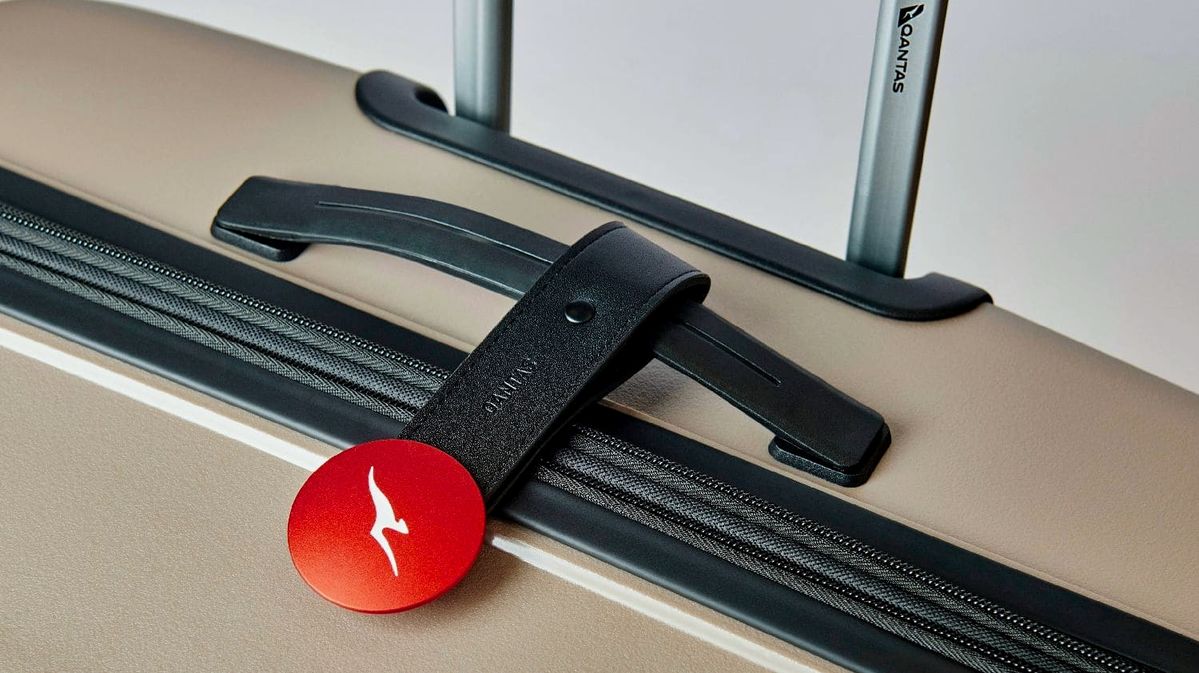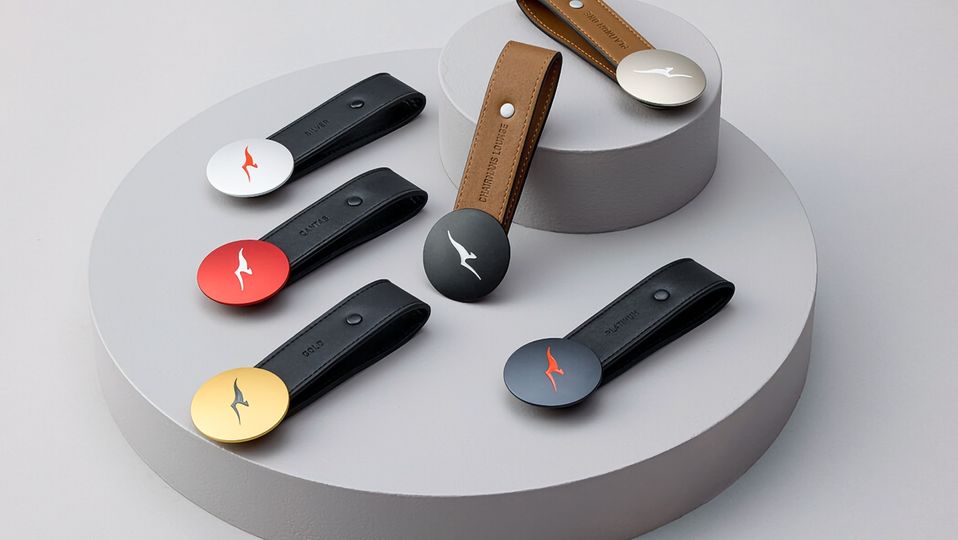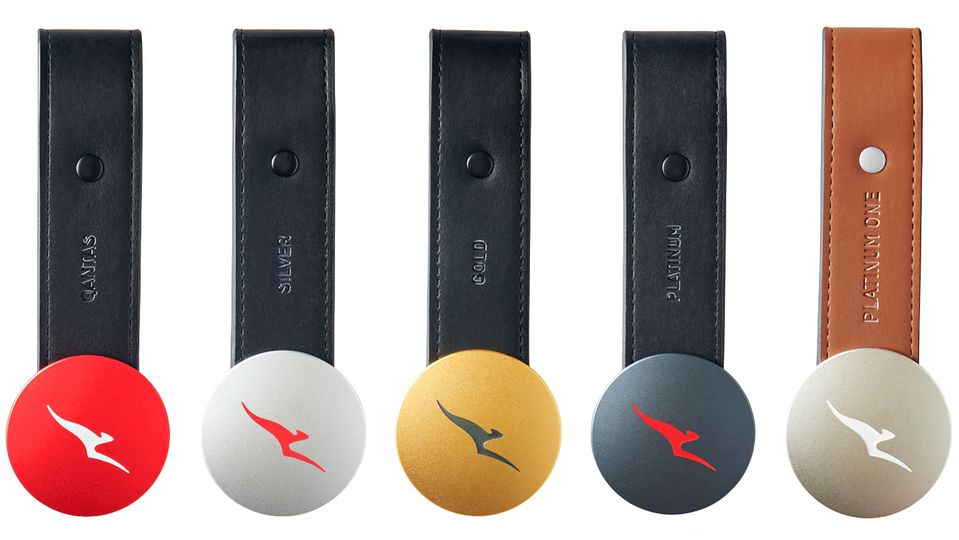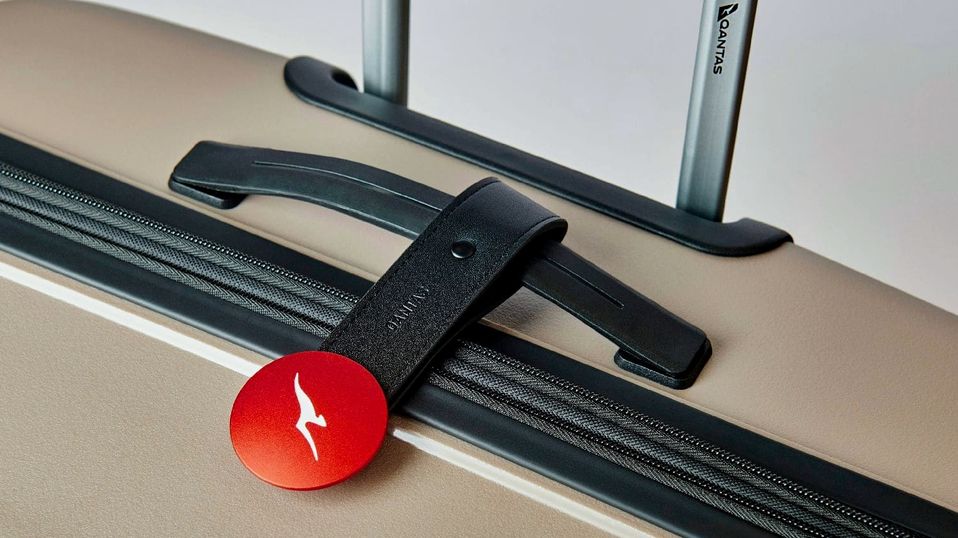Anybody who spends any time in a Qantas lounge, or even most Australian airports for that matter, will be familiar with the chunky plastic Qantas tags which frequent flyers affix to their bags, be it a compact wheeled rollaboard or a larger piece of checked luggage.
They’re the iconic Q Bag Tag – also fondly known as ‘coasters’ – launched in 2010 to streamline the process of checking luggage onto a flight, thanks to an embedded RFID chip.
Now they’re being replaced by these new-look Qantas Luggage Tags.
The stylish Qantas Luggage Tags feature an aluminium button colour-coded to reflect a frequent flyer’s status – such as Silver, Gold and a dusky colour for Platinum – with a more lustrous button for Platinum Ones and black for Chairman’s Lounge members.
They’re surprisingly larger and more solid than the Qantas photos might at first suggest – here’s a Qantas Luggage Tag next to a Q Bag Tag coaster, with an Australian passport between them for reference.
How to request a Qantas bag tag
Qantas is already sending these fashionable luggage tags out to its top-tier Platinum One frequent flyers and Chairman’s Lounge members.
As frequent flyers reach Silver, Gold, Platinum or Platinum One status, the Qantas website or app will offer them the choice of a Qantas Luggage Tag or a ‘leaf’ to accelerate their progress towards Qantas Green Tier status (which requires a total of five leaves, each from sustainability-focussed activities such as carbon offsetting your flying.)
Those who earn enough status credits to keep their Gold, Platinum or Platinum One (but not Silver) status for another year are likewise asked to choose between receiving a new Qantas Luggage Tag or adding one leaf to their Qantas Green scorecard.
Qantas has yet to advise if luggage tags will automatically be issued to frequent flyers holding lifetime Qantas status.

As with the Q Bag Tag, the back of the Qantas Luggage Tag has space to write your name and contact details.
However, some frequent flyers on social media say they’ve received their free Qantas Luggage Tag by requesting it through [email protected] or via the online support page.
Be sure to make it clear that you’re requesting one of the new new luggage tags for carry-on bags, not a Q Bag Tag.
Qantas Luggage Tags can also be purchased from the Qantas Marketplace for $20 or 3,480 Qantas Points, with the disc on those tags being a bright and very on-brand ‘Qantas red’.
It’s a bag tag, not a bag tracker
Unlike those big Q Bag Tags, the new Qantas Luggage Tags are just a tag – they don’t contain any luggage-tracking tech.
Qantas claims this tech has effectively been made redundant since the introduction of app-based luggage tracking across its domestic and international flights. We’re not convinced on that score, as we’ll explain later in this article.
In fact, the new tags aren’t meant for checked luggage at all – they’re intended to clip onto your carry-on bag.
Qantas says many frequent flyers have actually been using the Q Bag Tags for carry-on luggage, which honestly serves only to flag or perhaps flaunt their status (making them more of a brag tag than a bag tag), so these new accessories have been designed for hand luggage and cabin bags.
“The new luggage tags will help our teams to spot our valued members, recognise their continued loyalty and deliver that signature Qantas service,” a Qantas spokesperson tells Executive Traveller.
Why you should keep using your Q Bag Tag
You can continue to use your existing Q Bag Tags for bag drop functionality on domestic flights, as they will continue to operate as normal.
In fact, Qantas was well ahead of the high-tech baggage tracking curve with the 2010 launch of its RFID-enabled Q Bag Tags.
The RFID chip instead the coloured disc of a Q Bag Tag synchronises the traveller’s flight details with their baggage, and then lets the bag be identified by Qantas using RFID scanners and a ‘baggage reconciliation system’.
However, there was no way for travellers to access that system and receive assurance that their bags have been loaded onto the plane or are headed for the luggage belt.
By comparison, Qantas says its app-based luggage tracking lets passengers receive on-screen notifications on their smartphone
- after their luggage has been dropped off at check-in
- when the bag is ‘in transit’, having been scanned in the baggage loading area ahead of being transferred to your aircraft
- and upon arrival, when bags have been delivered to the carousel
For what it’s worth, Q Bag Tags and Qantas app-based luggage tracking are very different and arguably quite complementary systems.
With a Q Bag Tag associated with your booking via your boarding pass, there’s no need to line up at a check-in kiosk to print out and then fumble with a luggage sticker before taking your bag over to the drop point – you can skip the kiosk and go straight to the baggage drop zone.
So the Q Bag tags are less about actual bag tracking and more about a replacement for manual check-in and paper tags. They still work brilliantly at that job, and they work fine with the Qantas app-based bag tracking.
In addition, app-based luggage tracking is also very different to the real-time tracking provides by gizmos like Apple’s AirTags.
Instead, the process relies on each bag being physically scanned at a small number of specific points along the way, while the ‘in transit’ stage doesn’t actually indicate the bag has been loaded onto your flight.
We’d suggest no airline bag-tracking app will replace the utility value of AirTag-style trackers, which deliver (mostly) accurate geo-positioning of a bag with live ‘real-time’ tracking and have become an increasingly common part of the modern traveller’s arsenal.






